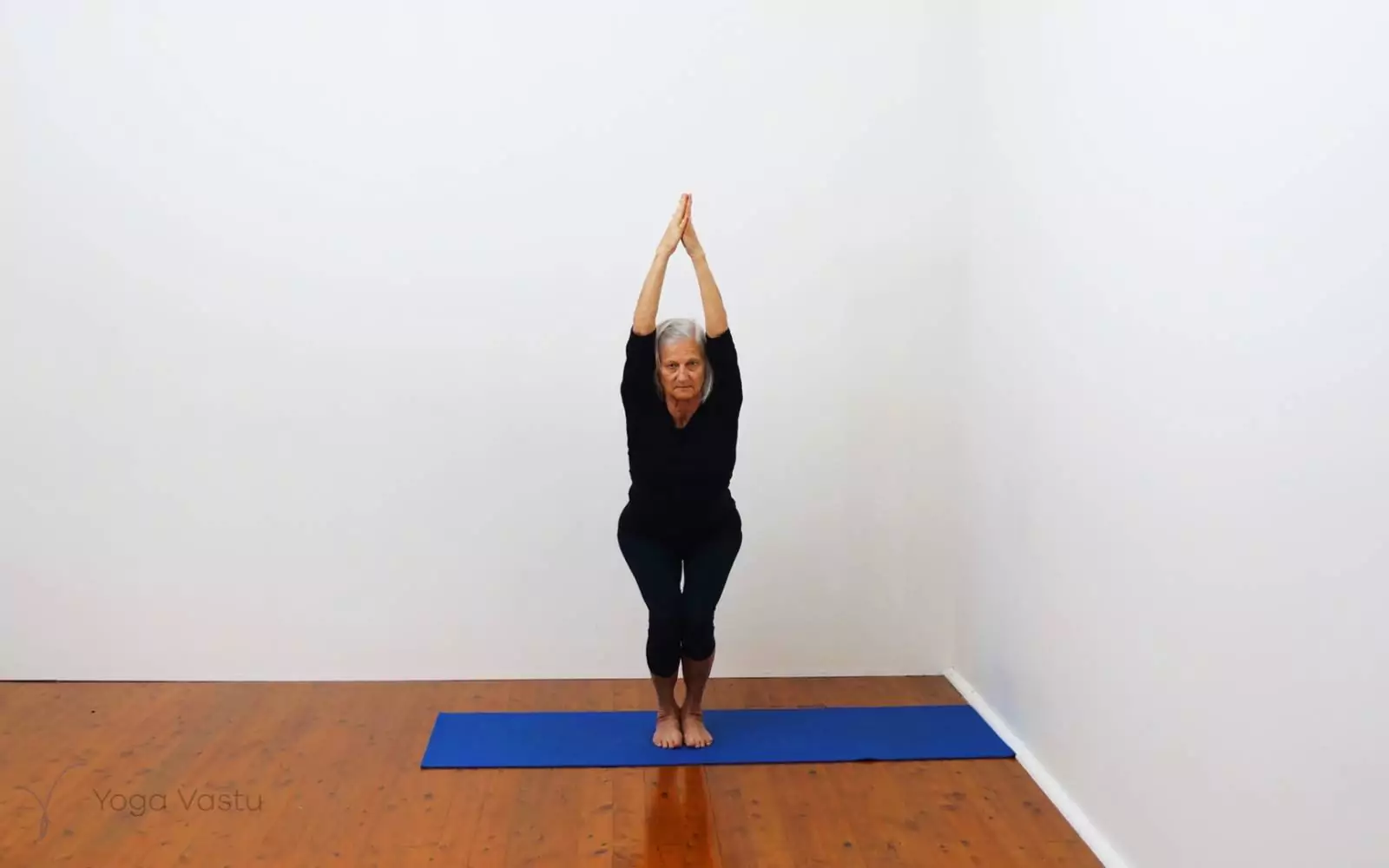How to perform Upward Prayer Pose
Stand tall in Tadasana. Bring your hands together at the center of your chest and, keeping your palms pressed firmly against each other and your fingers pointing upward, inhale and lift your hands overhead.
What is Urdhva Namaskarasana?
Urdhva Namaskarasana, also known as the Upward Prayer Pose, is a foundational asana in Iyengar yoga that holds immense significance. Derived from the Sanskrit words “urdhva” meaning upward and “namaskara” meaning prayer, this posture embodies a beautiful combination of grace, strength, and spiritual connection. Let us explore the intricacies of Urdhva Namaskarasana and understand how to practice it effectively, when to utilize it, and the benefits it offers.
How is it performed?
To perform Urdhva Namaskarasana, begin by standing tall with your feet hip-width apart. Gently bring your hands together at the center of your chest in Anjali Mudra, a prayer gesture. Keep your palms pressed firmly against each other, and your fingers pointing upward. As you inhale deeply, gently lift your hands overhead, while maintaining the connection between your palms. Extend your arms upwards, lengthening through your fingertips. Hold this position for a few breaths, allowing your chest to open up and your spine to lengthen. To release, exhale slowly and bring your hands back to the starting position.
When should I use it and what are its benefits?
Urdhva Namaskarasana can be used at various times during your yoga practice. It serves as an excellent warm-up posture, preparing the body for more complex asanas. Additionally, it can be used as a transitional pose between sequences, providing a moment of stillness and reflection. For example, you might use it to transition from Tadasana to Uttanasana or as part of a Sun Salutation sequence to replace Urdhva Hastasana. Urdhva Namaskarasana is particularly beneficial for those seeking to improve their posture, as it helps open the chest, elongate the spine, and strengthen the back muscles.
This asana also has a profound impact on one’s mental and spiritual well-being. By bringing the hands to the heart center, Urdhva Namaskarasana encourages a sense of introspection and inner focus. It helps to cultivate gratitude, humility, and a deep connection to the deeper self. Regular practice of this pose can enhance mindfulness and create a peaceful state of mind.
The physical benefits of Urdhva Namaskarasana are numerous. It stretches and tones the muscles of the arms, shoulders, and upper back, improving flexibility and range of motion. This pose also promotes proper alignment of the spine, alleviating tension and promoting a healthy posture. By expanding the chest and lungs, Urdhva Namaskarasana enhances breathing capacity and oxygen flow, benefiting the respiratory system.
Furthermore, this asana stimulates the heart chakra, fostering emotional balance and openness. It can help reduce stress, anxiety, and fatigue, while promoting a sense of calm and tranquility. Urdhva Namaskarasana is an invitation to connect with the inner self and embrace the present moment with gratitude and serenity.
In short, Urdhva Namaskarasana is a fundamental asana in Iyengar yoga that encompasses physical, mental, and spiritual benefits. By practicing this pose, one can improve posture, increase flexibility, and cultivate a deep sense of inner awareness. Whether as a warm-up, transitional pose, or a moment of reflection, it offers a profound opportunity for growth and self-discovery on the yoga mat and beyond.

